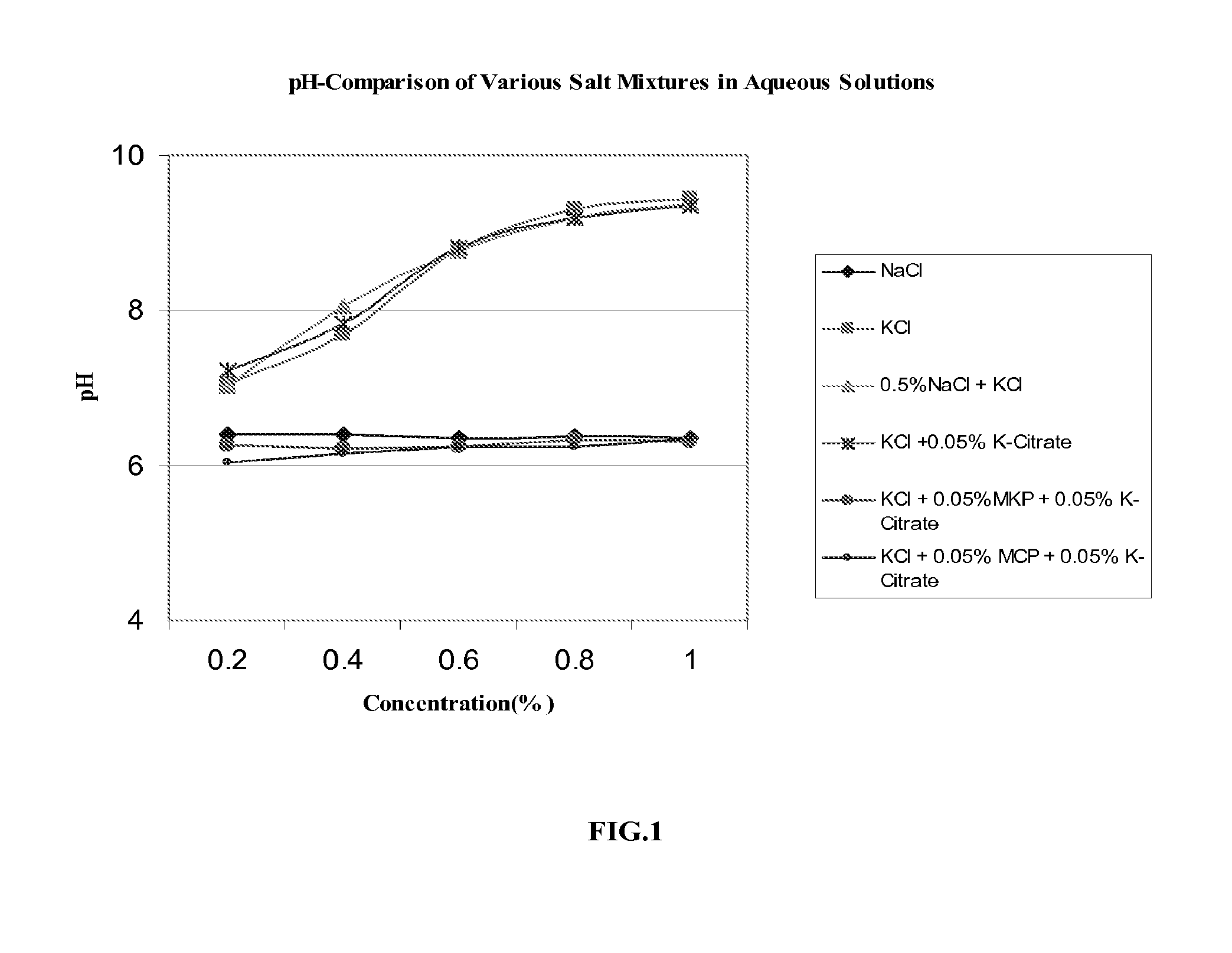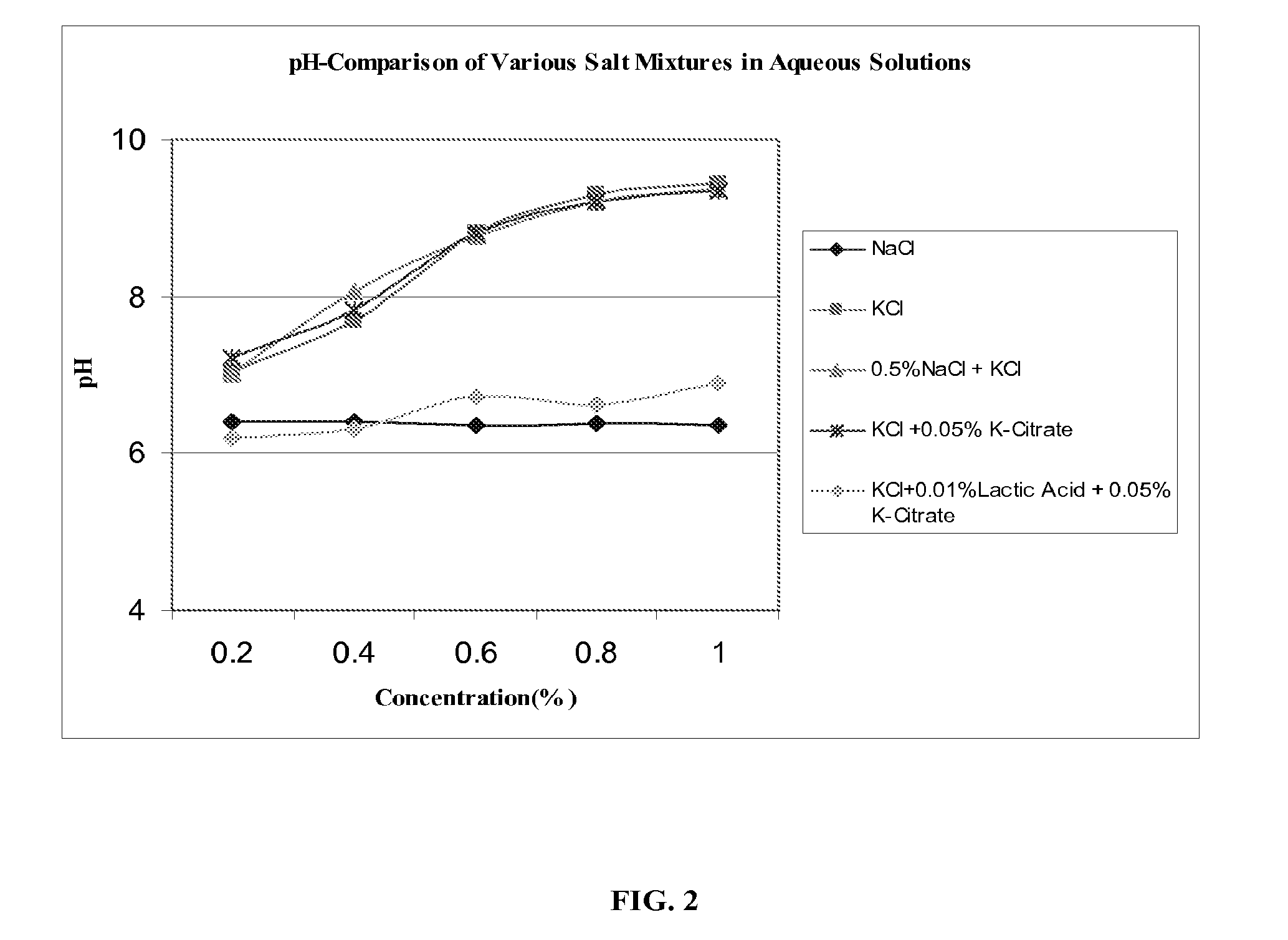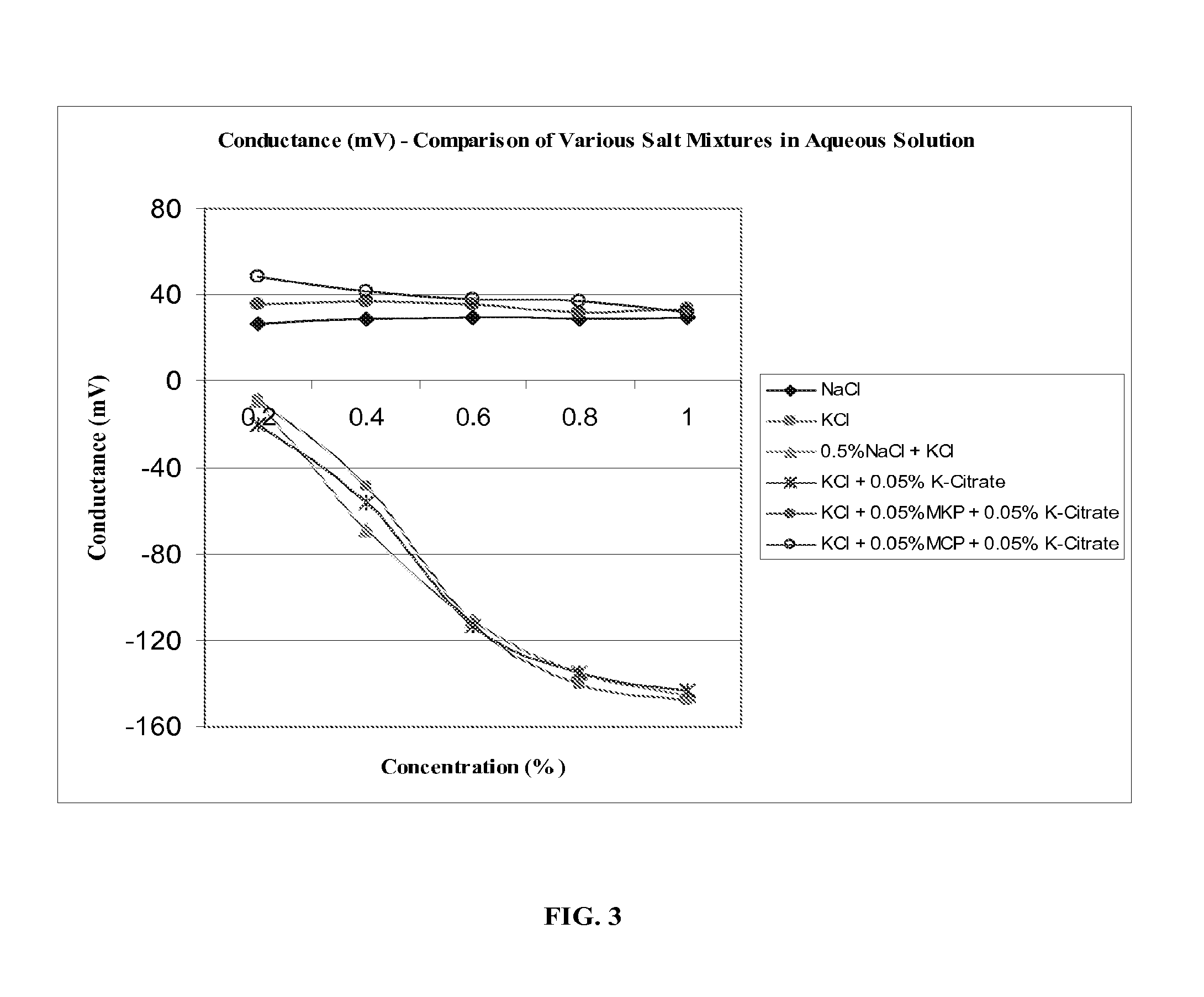Methods and compositions for reducing sodium content in food products
a technology of sodium content and food products, applied in the field of reducing sodium processed foodstuffs, can solve the problems of no cost-effective formulations that have been shown to perform well over a wide range, excessive dietary sodium intake, and affecting the taste of salt, so as to reduce sodium content, enhance salt perception, and minimize additional bitterness
- Summary
- Abstract
- Description
- Claims
- Application Information
AI Technical Summary
Benefits of technology
Problems solved by technology
Method used
Image
Examples
experimental example 1
[0054]In this example, salt enhancer blends were prepared according to Formulas 1-5 listed in Table 1:
TABLE 1Salt Enhancer Blends Prepared in Experimental ExampleFORMULA 1FORMULA 2FORMULA 3FORMULA 4FORMULA 5(wt. % of(wt. % of(wt. % of(wt. % of(wt. % ofINGREDIENTblend)blend)blend)blend)blend)Potassium66.6657.6433.3480.0075.00Chloride (KCl)Monopotassium16.6728.5733.3310.0012.50Phosphate(MKP)Potassium16.6714.2933.3310.0012.50Citrate (K-Citrate)Total (%)100.00100.00100.00100.00100.00Wt. % in0.60.71.20.50.8Solution
[0055]The salt enhancer blends were evaluated at the indicated usage rates in aqueous solutions containing 0.5 wt. % sodium chloride (480 mg sodium). The salt perception was compared against a control 480 mg sodium solution, without the enhancer added. Salt perception of each formula was rated as either less salty than control, equally salty as control, or more salty than control. Aftertaste of each formula was rated as either clean, metallic, or bitter. The salt solutions havi...
experimental example 2
[0056]In this example, several embodiments of the present invention (see Table 2) were evaluated in a chicken broth. Chicken broth having 480 mg of sodium with no added enhancer blend was used as a control. Ten chicken broth test samples were prepared containing salt enhancer blends as recited by Table 2, formulas 1-10. An 11-member trained sensory panel evaluated products, for, among other attributes, overall flavor, sweetness, salt intensity, and overall negative on a 15-point scale. These professional tasters calibrated their respective palates using reference broths (neither control nor experimental) containing 480 mg, 650 mg, and 890 mg of sodium. In this way, a numerical score could be assigned to the degree of salt perception. Panelists rated the 480 mg sodium reference broth to have a salt intensity score of 3.5, the 650 mg sodium reference broth to have a salt intensity score of 7.5, and the 890 mg sodium reference broth to have a salt intensity score of 13.5. Test samples ...
experimental example 3
[0059]Various embodiments of the present invention were also shown to improve salt perception of various kinds of salts, including sea salts. In this experiment, the salt enhancing effect of the salt enhancer blends on various sea salt samples is illustrated. Three sets of 500 g aqueous solutions of three different sea salt samples (Picromerite, Carnallite and Kainite) at 0.5 wt. % concentration were prepared (9 solutions, total). To one set of solutions, the salt enhancer blend of Formula 1, Experiment 1 was added at 0.6 wt. %. To the second set of solutions, 0.1 wt. % Monopotassium Phosphate +0.1 wt. % Potassium Citrate was added (no KCl). Lastly, the third set of solutions containing sea salts alone (without additions) was used as control. Samples were evaluated for salt perception against the control set of solutions. Those sea salt solutions having the enhancer blend (formula 1) were found to have higher salt impact as compared to control and also as compared to those sea salt ...
PUM
 Login to View More
Login to View More Abstract
Description
Claims
Application Information
 Login to View More
Login to View More - R&D
- Intellectual Property
- Life Sciences
- Materials
- Tech Scout
- Unparalleled Data Quality
- Higher Quality Content
- 60% Fewer Hallucinations
Browse by: Latest US Patents, China's latest patents, Technical Efficacy Thesaurus, Application Domain, Technology Topic, Popular Technical Reports.
© 2025 PatSnap. All rights reserved.Legal|Privacy policy|Modern Slavery Act Transparency Statement|Sitemap|About US| Contact US: help@patsnap.com



